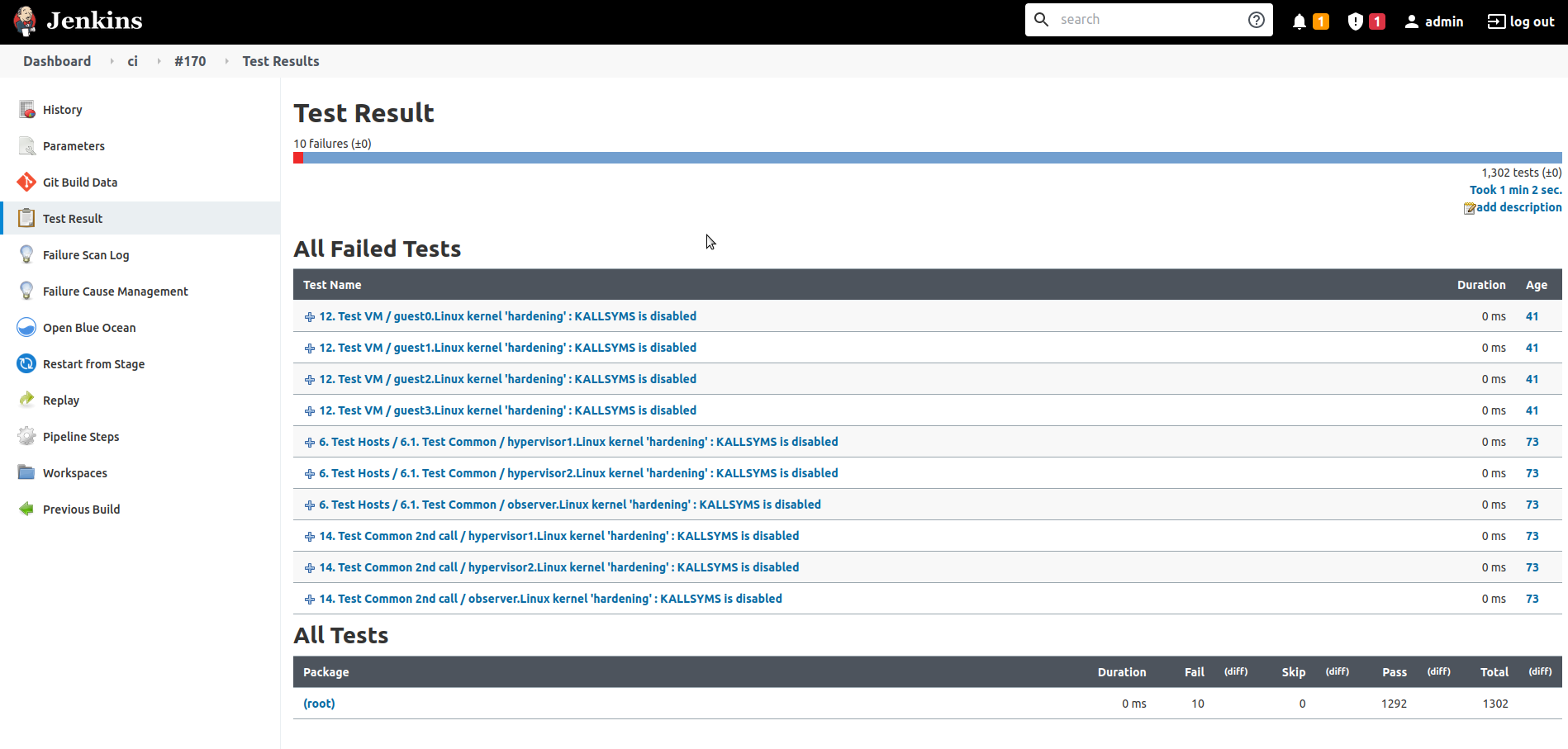WARNING : DEPRECATED
This page is deprecated and should be changed in the next days
A continuous A continuous integration (CI) process has been implemented in order to build deploy and deploy test a custom cluster and automatise the periodical validation of the developmentbefore merging any pull requests. Source code can be found in https://github.com/seapath/ci.
For now on, the CI is implemented for the Debian version of SEAPATH on the Ansible repository.
The CI is based on a Jenkins server that GitHub action and has been completely dockerized in order to guarantee its reproducibility and scalability.
Remote actions are achieved thanks to Ansible playbooks.
Jenkins
Jenkins is an open source automation server that permits the periodical build, test, deployment or other tasks that need to be automated such as code synchronisation.
Technical implementation
The CI operate on the Debian operating system. To avoid many problems, all machines are already flashed with a Debian iso and the CI will only configure the systems using the Ansible playbooks. This implies the iso creation and the boot process can't be tested.
A cluster running Debian is configured and linked to a self-hosted runner, on which the GitHub Action for the CI will run.
The CI job is The main CI job can be divided into different stages :
- Fetch source code from SEAPATH GitHub.
- Build Yocto images for the cluster machines
- Flash the cluster machines with the he newly created images (this is done thanks to a PXE mechanism) and reboot them
- Configure the cluster
- Deploy the VMs on the cluster
As shown on the diagram, each step of the chain is validated with the corresponding Cukinia tests and results collected on the CI Jenkins server.
...
- Fetch the sources of the pull request to test
- Launch the Debian configuration and hardening using Ansible playbooks
- Deploy Cukinia and launch tests
- Generate and upload the test report
The CI use Cukinia, a system-level validation framework as testing tool, all tests launched on Debian are available at https://github.com/seapath/cukinia-tests/tree/main
[ TODO : Describe the different category (cyber, rt, future ... ) ]
The CI can fail in two ways :
- The configuration of Debian is wrong and the associated Ansible playbook fail
- The non-regression tests fail
The failure of the configuration can be observed in the CI logs.
After the configuration, all test will be gathered in a test report. All the test contained in the report must pass for the pull request to be merged.
[ TODO : photos of test report ]
Using the ci
The CI is actually running on the debian-main branch of the Ansible repository : https://github.com/seapath/ansible/tree/debian-main
Every pull request need to pass the tests to be merged.
After opening a pull request, wait for an approval of a member of SEAPATH. This will trigger the CI as a GitHub Action. The logs of the CI are visible on your pull request page, either in the "Conversation" tab or the "Checks" tab.
All running actions are also visible in the Actions tab on the repository.
The complete CI takes about 15 minutes. At the end, the test report is available through a link given in the log of the Github Action.
[ TODO : Upload images ]
Host your own CI
[ TODO ]
RT test results
No Real-time or latency tests are run on the CI for now. We plan to integrate these tests at every releases of the SEAPATH project
Jenkins offers a web UI to configure, manage and follow the progress of its jobs. As shown in the following picture, the stage view shows job information such the progress of the pipeline execution or the trend of the test results for the consecutive job executions.
Analyse tests result
The results of the Cukinia tests run on the cluster are retrieved and displayed on the Jenkins UI.
Blue Ocean View
The Blue Ocean plugin offers an intuitive UI that simplifies the view and edition of a pipeline. It also permits re-running stages for a determined build.
Log information
The complete output of a job execution can be obtained as well as the partial logs for each stage, as shown on the following picture.
RT test results
In order to validate the real-time requirements of the SEAPATH project, the CI also permits to execute cyclic tests on the VMs and retrieve the results.



